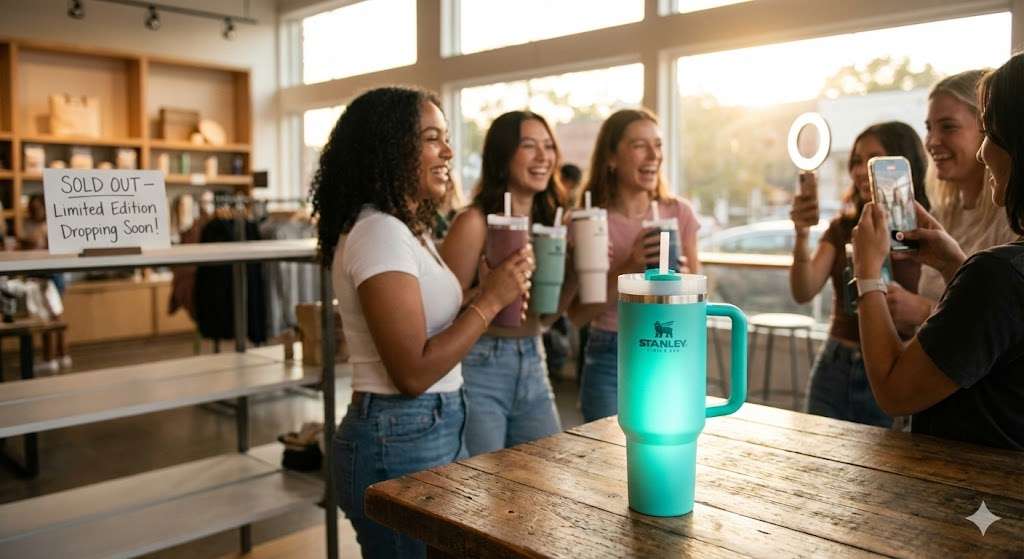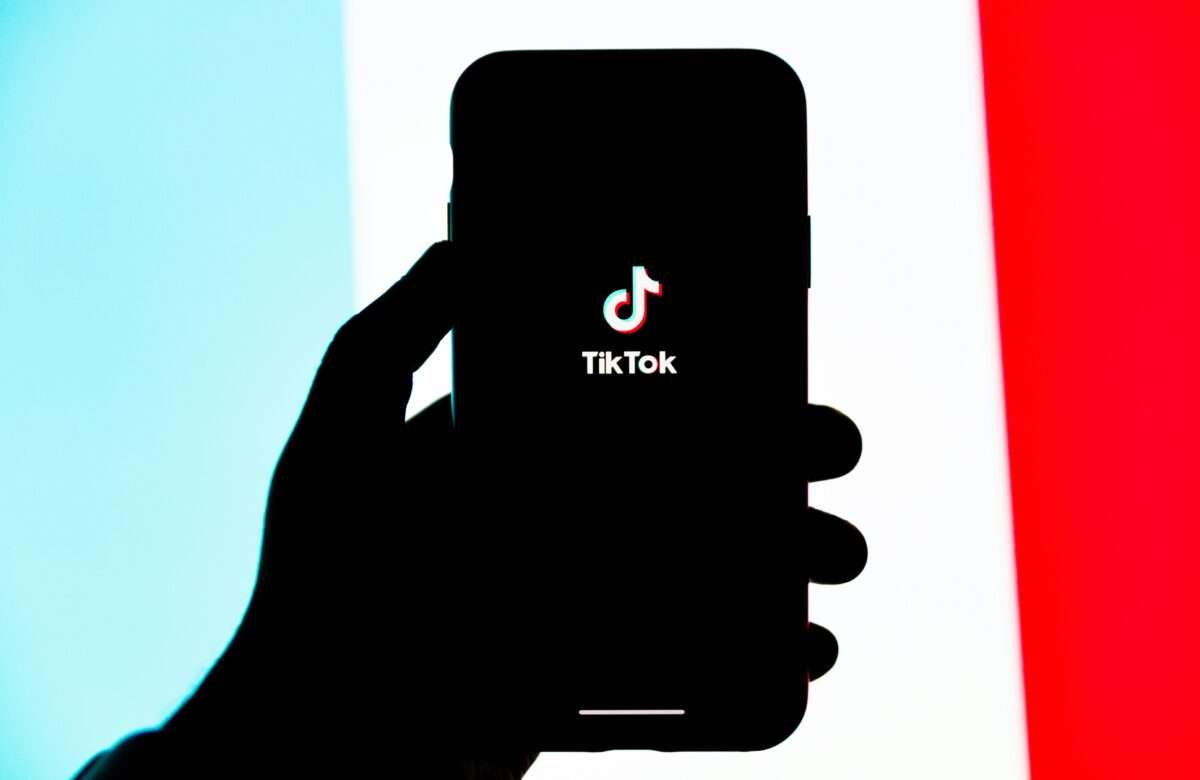- 26 November 2025
- No Comment
- 100
Old Bottle that Became a Gen Z Status Symbol

The Rise of a Modern Cultural Icon
A Product Nobody Predicted Would Go Viral
If you could travel back to 1994 and ask people what the most fashionable personal accessory of the future might look like, nobody would have guessed a stainless steel water bottle. The world then was obsessed with Walkmans, denim jackets, cassette players, and the early promise of personal computers. Water bottles were simply tools, functional items tucked away in backpacks, seen as nothing more than necessities.
Yet here we are, and the Stanley Cup, once a rugged bottle carried by blue collar workers on job sites, has become one of the most influential lifestyle products of the decade. This old brand, more than a hundred years in the making, suddenly resurfaced as a cultural icon. By 2023 the company’s revenue had skyrocketed from seventy four million dollars in 2019 to an astonishing seven hundred fifty million dollars. To the outside world the rise looked sudden, almost magical, but beneath the viral noise sits a deeper story of marketing brilliance, community power, cultural momentum, and the incredible human desire to belong to something bigger than ourselves.
A Sense of Belonging Hidden Inside a Bottle
The fascinating part is that most Stanley customers are not simply buying a tumbler. They are buying a feeling, a sense of connection, a shared identity with millions of others who carry the same cup in their hands. In many ways the Stanley Cup is no longer just an object, it is a membership card into a vibrant community that celebrates wellness, aesthetics, routine, and lifestyle. Owning one feels like joining a club where everyone is celebrating the same little ritual of staying hydrated, staying organized, staying stylish, and being part of what feels like a powerful wave of cultural energy.
Many TikTok creators often describe it in a slightly emotional tone. They say you are not just purchasing a Stanley, you are participating in a story that millions of others are living at the exact same time. In reality people love to carry things that reflect how they want to be seen. Just as fashionable shoes or a trendy handbag once did, a simple water bottle has become a quiet expression of personality. Stanley tapped into this psychological truth more efficiently than almost any competitor in the space.
The Product That Stayed the Same While Everything Else Changed
What makes the story even more surprising is the fact that the Stanley product itself has hardly changed over the years. Aside from the Quencher design introduced around 2016 or 2017, the core of the product remains the same sturdy stainless steel construction that has existed for decades. So the question naturally arises, how did a relatively traditional product suddenly become a modern lifestyle sensation. The answer lies in the way Stanley reimagined its marketing engine. The brand did not rely on conventional advertising alone. Instead, it inserted itself into the rhythm of everyday digital life. TikTok creators, lifestyle vloggers, gym enthusiasts, mothers documenting daily routines, and thousands of micro influencers began showing the product as part of their world. These creators interpreted the product through their own cultural lens and introduced it to audiences who shared similar lifestyles. The result was a powerful web of organic storytelling that multiplied faster than any paid ad campaign could.
The Forces Behind Stanley’s Explosive Growth
The Visionary Who Rewrote the Brand’s Destiny
At the center of all this strategy sits one man, Terrence Riley, the current president of Stanley and the same marketing genius who single handedly revived the global craze for Crocs. Riley understands something that modern marketers often forget. Brands do not truly belong to the companies that own them. They live in the hands of the people who use them. When Riley saw a viral TikTok of a woman whose Stanley Cup survived a car fire with ice still inside, he instantly recognized an opportunity. Instead of treating it like a random moment of luck, he turned it into a brand defining story by gifting the woman a new Stanley and an entirely new car. That gesture cemented Stanley as more than a company. It became a character in a narrative that users were emotionally invested in.
Riley believes that customers should be invited to help shape a brand. When consumers feel like co authors rather than passive buyers, they protect the brand, elevate it, and evangelize it. This shift is evident in how Stanley’s community behaves. People do not just use the product. They showcase it, celebrate it, accessorize it, and passionately defend it across social media. This is not typical consumer behavior. It is cultural fandom.
A Classic Product Backed by Real Quality
All of this, however, would collapse instantly if the product itself was weak. What makes the Stanley story even more compelling is the undeniable product quality at its foundation. For decades Stanley built its reputation among hardworking, practical users who valued durability over aesthetics. This reputation survived generations. When the new wave of modern customers arrived, the product already possessed a backbone of authenticity. People discovered that the bottle was not just pretty or trendy. It actually kept drinks cold, survived drops and rough use, and remained reliable for years. This combination of functional quality and cultural aesthetic created a perfect formula for long term appeal.
A Viral Movement Not Without Controversy
Of course, no viral success unfolds without turbulence. Stanley’s rise has experienced chaotic moments, from crowded Target stores turning into frenzy zones during limited edition releases to a woman being arrested for allegedly stealing twenty five hundred dollars worth of Stanley Cups. The brand also faced criticism when users raised concerns about potential lead content used in manufacturing seals. Stanley responded by explaining that while lead is used in a sealing material, the sealed area is fully covered by stainless steel, keeping consumers safe. Competitors quickly tried to capitalize on the controversy. Hydro Flask and Ála used the opportunity to highlight the lead free nature of their own designs. But the wave of cultural love surrounding Stanley proved far more powerful than the negative noise.
A Brand Built Slowly Over a Century
What truly drives Stanley’s ongoing success is its deep understanding of its customers. Unlike many brands that chase quick virality or explosive early growth, Stanley is a company that took its time. It matured over decades, built trust slowly, and allowed its identity to evolve naturally. When the right cultural moment arrived, the brand was already prepared. Many new founders believe their brand must explode immediately, but Stanley shows that slow, steady growth creates foundations that can support massive cultural leaps.
Peer Influence, The Engine of Modern Marketing
Another remarkable aspect of the Stanley phenomenon is the idea of peer influence. Traditional advertising pushes messages from brand to consumer, but modern audiences trust each other far more. Stanley allowed real people, not polished advertising teams, to become the storytellers. This approach made the product feel relatable and authentic. It was not a corporation telling you to buy a bottle. It was your friend, your favorite creator, your gym buddy, your coworker. Peer marketing is subtle but incredibly powerful. It does not feel like persuasion. It feels like discovery.
How Stanley Became a Cultural Movement
When a Product Becomes a Symbol
This entire movement can be described as cultural contagion, the moment when a brand shifts from a product to a symbol. When people begin buying something not because of what it does, but because of what it represents, that product enters a space where demand becomes self sustaining. Every new customer becomes a marketer. Every new trend becomes a story. Every limited edition release becomes an event.
Scarcity played a critical role in maintaining this energy. Limited colors, seasonal editions, and exclusive drops created anticipation and desire. Target stores filled with people rushing to secure a color that might never return. For marketers these scenes may look chaotic, but they are also visual proof of an emotional connection that money cannot buy. This is demand in its rawest form, driven by community, identity, and the simple joy of owning something that feels special.
A Reflection of Human Nature
In the end the Stanley Cup phenomenon is not just about hydration. It is a reminder of how humans behave. We seek belonging, identity, and community in everything we buy and everything we share. From the earliest moments of human history we have used objects to tell stories about who we are. The architecture of our minds has not changed. Only the objects have.
Stanley offers an affordable way for people to feel connected to a culture that excites them. It is not an expensive luxury. It is an accessible symbol of personal expression. As long as people continue to crave connection and identity, phenomena like Stanley will continue to rise.
A Lesson in Community Driven Branding
The brand’s journey teaches a timeless lesson. A great product may open the door, but a great community carries it into the world with a force that even the best marketing budget cannot replicate. Stanley is no longer a bottle. It is a movement shaped by millions of people who found a small piece of joy in carrying it. And in a noisy world where trends come and go, that kind of meaning is rare, precious, and incredibly powerful.
Read more: Is the AI Boom Over? Analysts Warn of Early Signs

